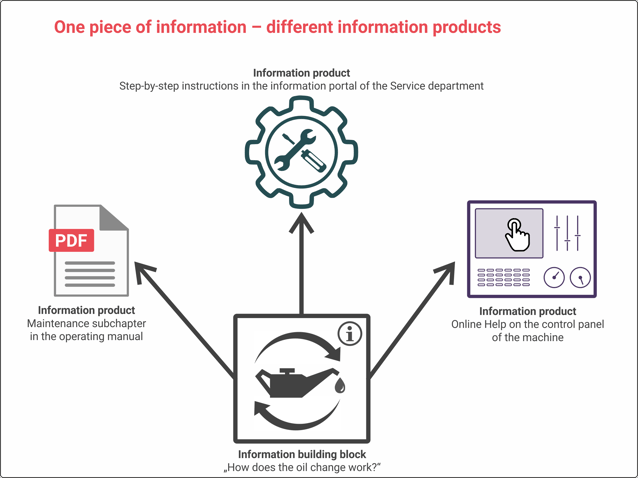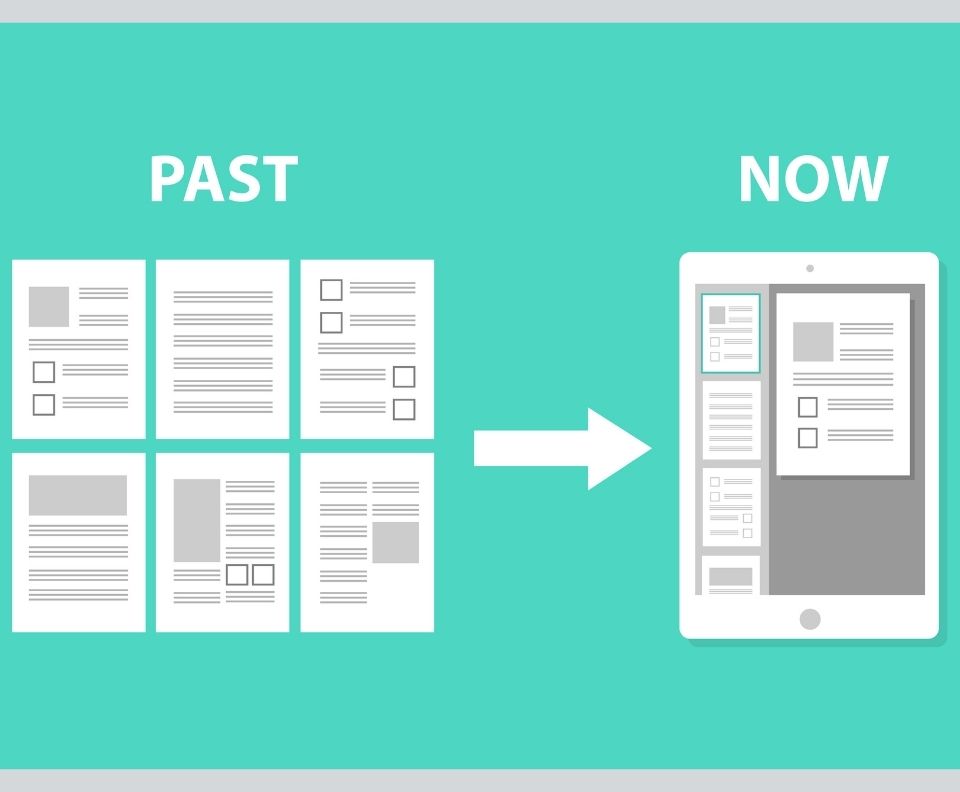In recent years, the term "information product" has appeared over and over within the professional world. We've now adopted this term in our communications as well. Is this simply a buzzword and hype that everyone's now following, or why do we no longer say "document" as we used to? These are the questions I'd like to address in this article.
The signs of the times are unmistakable: In all areas of our daily lives, the printed document is playing an increasingly minor role. When we inform ourselves, we do so via digital media, and if you look closely, actually almost always via the Internet.
At the same time, the way we consume information has also changed. We no longer read as intensively. We take less and less time to inform ourselves in-depth; instead, settling for short, overview-like information. I myself regularly catch myself reading the daily newspaper in the morning, digitally on the iPad of course, often only reading the teasers of the articles and no longer even opening the articles to read them in full.
When we need a specific piece of information, we're now used to using modern search mechanisms. Google search, Wikipedia and Siri, Alexa or Hey Google have long since replaced reaching for the encyclopedia. As a rule, we inform ourselves digitally. Printed information is increasingly becoming a nostalgic luxury item. People "treat themselves" to reading a real book because they like the feeling. You read the newspaper in the morning because it's so convenient and gets you off to a good start for the day.
But the tax advisor who's looking for specialist information to advise her client well no longer reaches for the wall of books she still has set up in her office for nostalgic reasons. She uses a digital specialist information portal that can provide her with the information she needs faster, more up-to-date, and more precisely than the 200 kg mountain of paper behind her.
The document is an outdated model
Looking back at the above, I think it's clear that our target audience is less and less interested in receiving user information in the form of encyclopaedia volumes. The good old document is a discontinued model. That may be sad, but it's the way of things. Legal requirements and industry specifications will ensure that we continue to print our knowledge on tons of paper over the next 10 years, but our users will increasingly bid it farewell.
To make sure this shift happens in our minds, I think it's quite wonderful that we can use a new word for it: INFORMATION PRODUCT.
This word expresses a lot. So it's no longer all about the "document," which is, after all, a self-contained set of information frozen in time and usually printed on paper. Instead, I think it makes much more sense to think of the document as one kind of information product, alongside which a lot of other kinds of information exist. And these are usually digital.
The following example shows how a single information module – such as the description of an oil change – can be prepared and made available in the form of various information products. Here it becomes clear that the traditional operating manual in PDF format is just one way of doing this. Other, purely digital information solutions can also be used, which may be better suited to providing users with the right information at the right time.

Information products differ not only in the media form in which they're presented (i.e. whether the information is published as online help, a website, an e-book, or content in an information portal, but also in terms of the amount of information compiled). In other words, an information product can summarise different subsets of a total amount of information in terms of the amount of information and the depth of information. Thus, information products can be targeted and compiled for specific user groups, situations, and use cases. Also, an information product doesn't have to be something static. Updating and expanding the information it contains is both entirely possible and actually desired by users.
The concept of the information product is therefore much more universal than that of the document and therefore fits much better into our digital age.

What does this mean for future information concepts and projects?
Let's not kid ourselves: Most Technical Editorial departments around the world still produce PDF documents today. These are printed out less and less frequently and can also be read on tablets and the like, but a PDF is only the beginning and still far from the optimum in the digitisation of the information world. So sooner or later, we'll have no choice but to provide users with up-to-date information.
When we design user information today, we should therefore think much more about how the information reaches our users and how it's presented to them. So this is about selecting the appropriate information product(s) (yes, there will often be more than one) that will best meet the information needs of our various user groups.
Therefore, from now on, we'll use the term "information product" and invite you to join us in developing strategies for providing your users with helpful information on products, software and services in the future.

